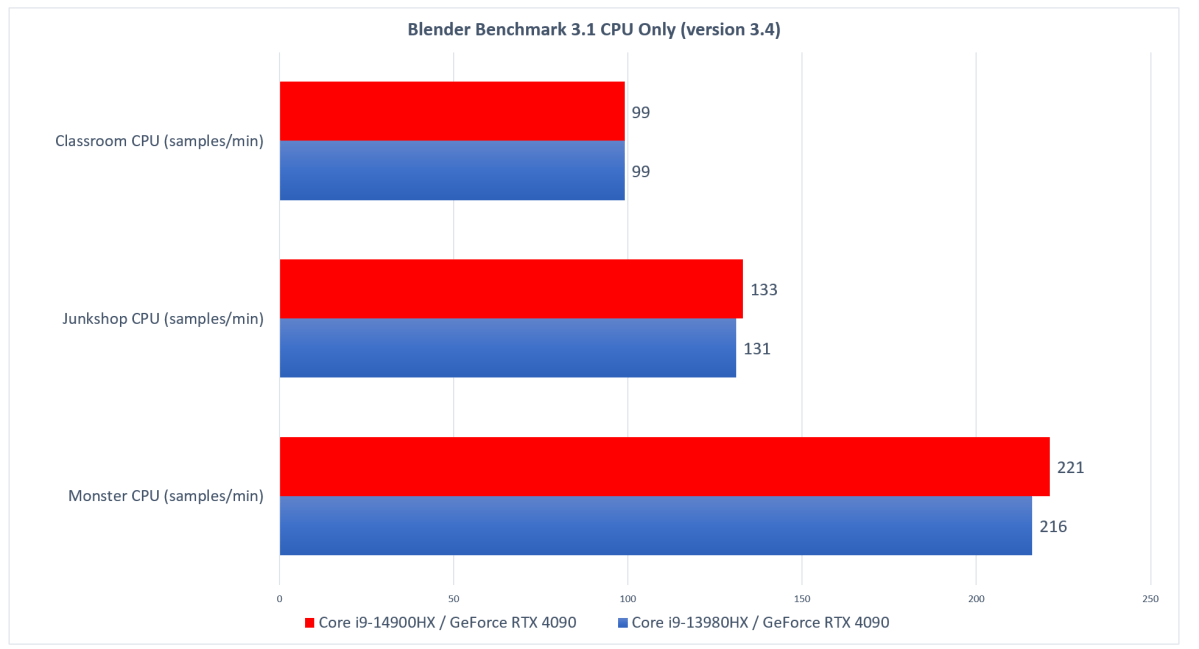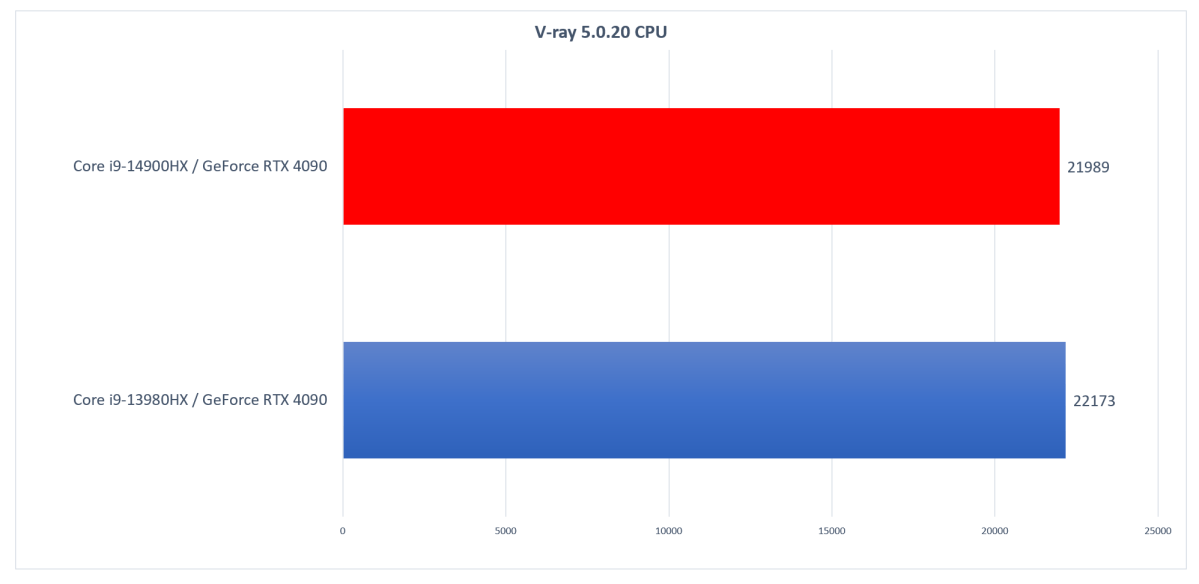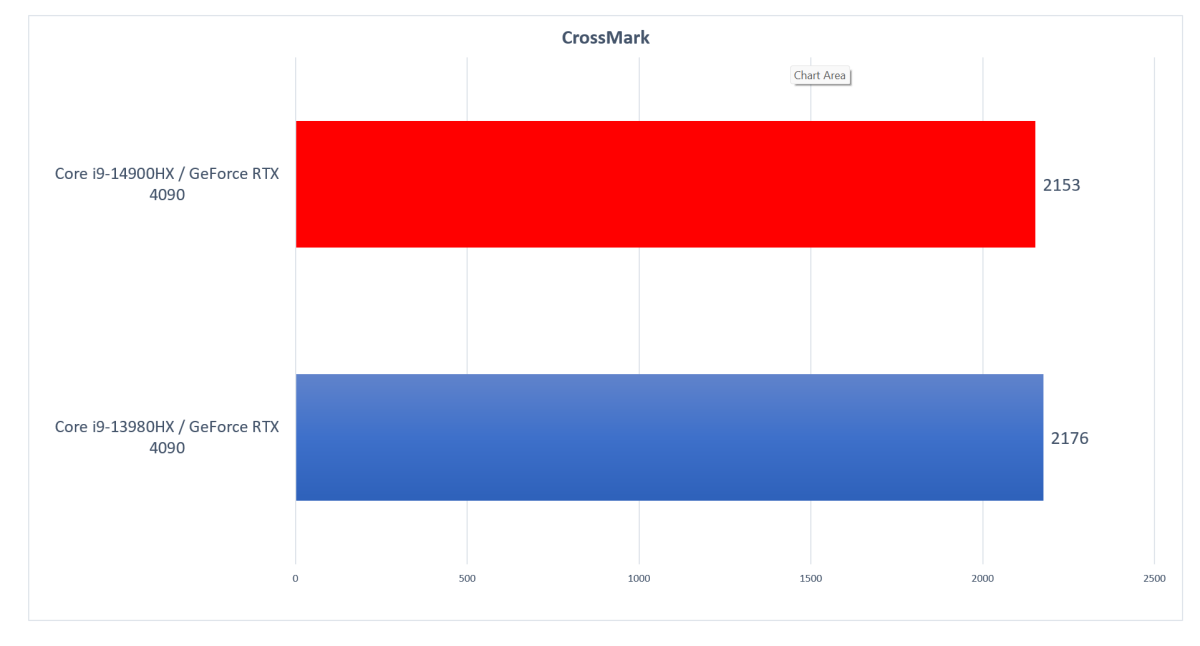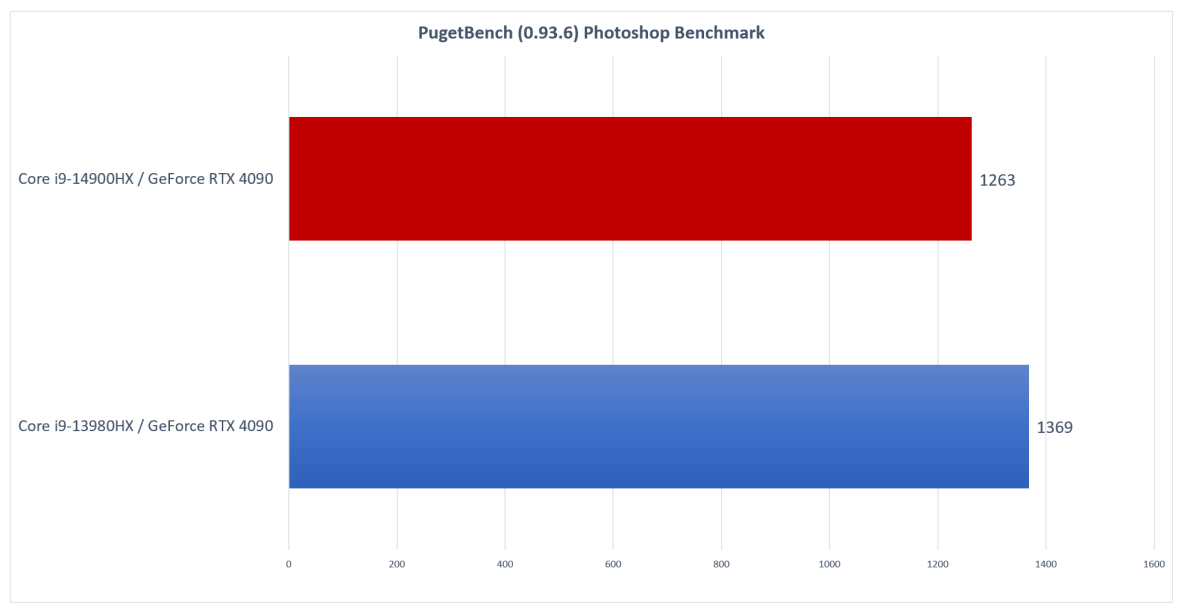On paper, Intel’s latest 14th-gen mobile Core HX processors don’t offer laptop buyers much in the way of an upgrade over the previous generation. In the real world, that holds true as well. And, weirdly, that’s some of the best news you’ll hear all year if you’re looking to pick up a gaming laptop without breaking the bank.
Intel’s 14th-gen Core i9-14900HX is the fastest mobile PC CPU we’ve ever tested, though AMD’s AMD’s Ryzen 8000 Mobile family of processors are waiting in the wings. Intel’s latest 14th-gen Core HX processors sit alongside its Core Ultra laptop chips, although the two aren’t necessarily designed to compete. The Core Ultra (Meteor Lake) chips tend to emphasize long battery life, while the Core HX chips focus on performance first.
And it’s a beast: the new Core i9-14900HX delivers 24 cores and 32 threads, combining 8 performance cores and 16 efficiency cores. But it’s also largely the same beast as the 13th-gen Core i9-13980HX that we tested a year ago. The number of performance (P-cores) cores remains the same, as does the number of efficiency cores (E-cores), plus the total number of threads. Even the process technology remains the same, at the Intel 7 node.
Remember, the 13th-gen Core i9-13980HX was a “Raptor Lake” chip. The Core i9-14900HX we tested is a “Raptor Lake Refresh” processor. Intel’s ARK database helpfully compares the two chips, which we’ve excerpted below.
The difference? Intel boosted the turbo clock speed from 5.6GHz to 5.8GHz, as it tweaked the power and voltage curve in Raptor Lake Refresh. That played out in different ways in our testing.
Mark Hachman / IDG
Intel provided us with a monstrous MSI Raider GE78 notebook with a Core i9-14900HX and an Nvidia GeForce RTX 4090 processor inside. It’s very similar to the MSI Titan GT77 we used for the prior-generation testing of the Core i9-13980HX. (Separately, we’ve also reviewed an Asus ROG Strix Scar 18 with similarly ferocious firepower inside.)
We’re not going to focus on the MSI Raider as a notebook in this article, but demonstrate how the 14th-gen HX chip differs from the 13th-gen in a few CPU-specific benchmarks. That will largely eliminate the use of games, instead focusing on synthetic and actual productivity tests that test the CPU’s performance. Forget battery life, too. Instead, we dialed up the Windows performance slider and the Raider’s cooling to maximum levels, as we did for the 13th-gen MSI Titan GT77.
Put simply, this story is designed to help you decide whether or not you need to buy a 14th-gen Core HX laptop, or settle for an older model instead.
14th-gen mobile Core HX performance: more of the same
Cinebench R23 is a tried-and-true benchmark, using all of the CPU’s threads to render a scene. Alternatively, you can also ask the benchmark to allocate just one core to do the job — handy if you still prefer games and apps that are coded to use a single core or thread, rather than many.
Mark Hachman / IDG
Here, we see an 11 percent improvement in multi-core performance but just a 2 percent improvement in single-threaded performance. That’s a fairly decent improvement where the multi-threaded performance is concerned.
Blender is a popular, open-source 3D rendering tool used for animated films. The tool can be set to use just the CPU to render several scenes, as we do here. But the improvement is slight (2 percent at most) possibly because the scenes can be rendered in a just a couple of dozen seconds or so.

Mark Hachman / IDG
It’s a good time to point out that CPUs typically jump from a base power level into a turbo power state, sometimes referred to as PL2. The time in which the processor can remain in a turbo state, known as the tau, impacts performance; if the laptop can remain in a turbo state for longer, it can get more work done. But the tau is often just as dependent on the design of the laptop and its cooling system as much as the CPU itself, so we can’t read too much into it. The fact that both notebooks are designed by the same MSI engineering team, though, helps.
We used a tool called HWInfo to extract some of this data. In the Core i9-14900HX’s case, the HWInfo tool reports that the tau should be about 56 seconds, during which this 55-watt CPU sucks 150W of power and can climb to over 5GHz. After 56 seconds, the chip should lower its speed to a base clock speed (2.4GHz, HWInfo reports) to avoid overheating.
That means that prolonged tests typically push a chip past that tau time. We use the Handbrake open-source conversion tool to transcode a 4K .MOV file to a H.265 format and record the time it takes to do so.
Unfortunately, we discovered an error in our 13th-gen Core HX testing, so we’re not including a formal comparison between the two gaming notebooks. But we did test a 13th-gen Core i9-13950HX in a second, thinner laptop, which generated a score of 634 seconds while performing the task. Our 14th-gen Core i9-14900HX notebook performed the task in 554 seconds. Again, the two aren’t directly comparable, but that’s still a 10 percent drop.
Unfortunately, that’s where the party ends. The V-ray (by Chaos) rendering plug-in normally would use the laptop’s GPU, but we can ask it to use the CPU instead. It, too, completes quickly. The two laptop platforms are essentially statistically equal.

Mark Hachman / IDG
So, too, is the Bapco CrossMark benchmark, which uses the CPU to perform real-world tasks. In both V-ray and CrossMark, less than 1 percent separates the two results.

Mark Hachman / IDG
We also compared the two platforms using the PugetBench test, which is a benchmark constructed by Puget Systems with individual tests in Lightroom, Photoshop, and Premiere Pro.
PugetBench has moved on to a new “For Creators” benchmark, incidentally. We didn’t have access to the older MSI 13th-gen laptop for testing, or we would have run this benchmark. We focused on the older Photoshop test instead. Weirdly, we saw the same anomaly as we saw in our previous tests; performance went backwards by 7 percent.
The PugetBench test does take several minutes to complete, however, so we might have expected better performance, a la the Handbrake benchmark, But it was not to be.

Mark Hachman / IDG
Thunderbolt should not affect your decision
What Intel would like you to consider while evaluating the 14th-gen HX platform, is, well, the platform: 16 lanes of PCI Express Gen 5, support for DDR5-5600 memory, and so on. But again, this is all the same as the 13th-gen Core HX platform offers.
There’s one difference, sort of: Thunderbolt 5. This next-gen I/O standard will offer 80Gbps (and in some cases, 120Gbps) of bandwidth to displays, GPUs, and other peripherals beginning in the 14th generation of Core chips. But unlike Thunderbolt 4, Thunderbolt 5 controllers will not be integrated in 14th-gen hardware, which means that laptop makers will have to build it in with a discrete chip. That’s going to require additional cost. More to the point, neither Thunderbolt 5 laptop controllers nor Thunderbolt 5-certified peripheral hardware are actually available, and won’t be until mid-2024 or later.
Because of Intel’s reluctance to certify non-Intel platforms as Thunderbolt compliant, AMD Ryzen notebooks use the compatible USB4 standard, instead. But 80Gbps USB4 hardware isn’t here, either, and won’t be until later this year.
Is the 14th-gen Core HX worth the upgrade?
If you already own a 13th-gen Core HX notebook, it is absolutely not worth upgrading to a 14th-gen Core HX. If you own a 12th-gen Core gaming notebook or below, it’s a much more compelling option. For that, we’d recommend you re-read our older 13th-gen Core review for performance comparisons to 12th-gen hardware. (Spoiler alert: 13th- and 14th-gen Core chips are a massive improvement over their predecessors, especially in multi-threaded tasks and games.)
Is the 14th-gen Core HX better than AMD’s Ryzen 7000 HX series? We can’t definitively say for now. Ditto for Ryzen 8000 Mobile, which was only recently announced. But keep in mind that the Ryzen 9 8945HS offers just 8 cores and 16 threads, and runs up to 5.2GHz at turbo speeds. The Intel 14th-gen Core HX tops that in core count, threads, and turbo clock speed — so if we were to guess, yes, AMD will lag behind.
The fact that the 13th-gen Core HX and 14th-gen Core HX are extremely similar is not a bad thing, though, where you’re concerned. Remember, as the new 14th-gen gaming notebooks roll out, retailers are going to want to get rid of their older hardware to make room. And to do that, they’re going to offer the older notebooks at a discount, as part of a sale.
But if a 13th-gen Core gaming notebook is virtually as good as a 14th-gen gaming notebook, that’s an opportunity. Why buy a 14th-gen Core HX notebook when you can buy a 13th-gen Core HX laptop that’s just as awesome at a juicy discount?



